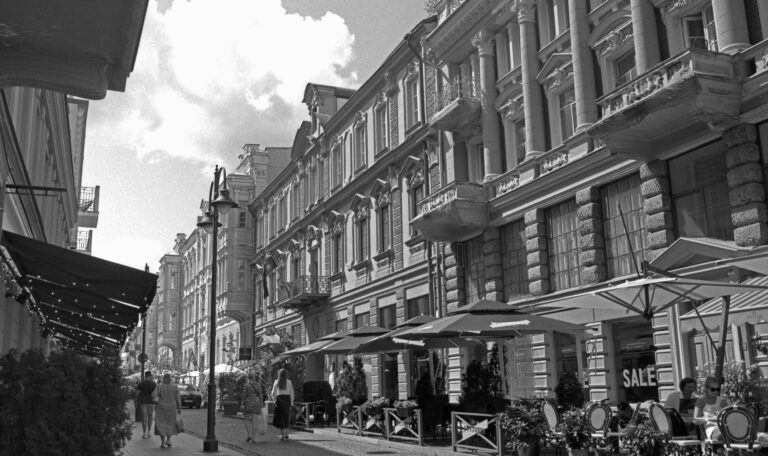Since 1998, the Vilnius City Municipality, together with the Vilnius Old Town Renewal Agency, has been implementing the Old Town Revitalisation Programme. In its initial stages, the focus was on renewal key public spaces: Cathedral Square, Town Hall Square, the main Old Town streets, the S. Moniuszko Square, the amphitheatre of the Theatre and Music Museum courtyard, and the pedestrian walkway and viewing platform near the Bastion. Part of the city’s defensive walls was also restored.
Since 2002, partial financial support has been provided to owners of cultural heritage buildings wishing to restore their exteriors and courtyards. Due to the economic crisis, this support was paused between 2009 and 2015, but it was later resumed. Until the end of 2023, partial support (up to 50%) was offered under three programmes:
- Assistance for eliminating potentially dangerous conditions in elements of facades (balconies, lodges, cornices) in multi-apartment buildings located in the Old Town or its protection zone (since 2015).
- Support for the exterior and surrounding environment maintenance of cultural heritage buildings located in the Old Town (since 2017).
- Support for the exterior restoration of cultural heritage buildings located in heritage areas (Antakalnis, Naujamiestis, Žvėrynas, Rasų colony, and Šnipiškės) (since 2019).
In 2023, with the help of partial municipal funding (50%), 12 roofs, 13 facades, one set of shutters, two doors, and a balustrade were restored in the Old Town, Naujamiestis, and Žvėrynas. In addition, 128 emergency balconies in seven apartment buildings were repaired. The process of granting partial support was administered by the Vilnius Old Town Renewal Agency, and the Vilnius City Municipality allocated €1.687 million for partial funding.
In 2023, the Vilnius City Council approved an updated Vilnius Heritage Conservation Programme. Its goals remain the same: to cooperate with local residents and institutions to preserve and nurture the valuable heritage located in the UNESCO World Heritage Site and its protection zone. The share of financing was increased from 40% to 60% for exterior restorations and up to 80% for emergency repairs of balconies and other facade elements. Wooden architecture and the restoration or recreation of wooden windows and doors are also supported.
Experts from the Agency provide consultations to building managers, owners, and communities, and they oversee the application process for municipal support, check submitted documents, participate in the municipal working group on support allocation, draft funding agreements, and monitor the implementation of these agreements. Municipal support for exterior building maintenance promotes public awareness and responsibility regarding the preservation and care of cultural heritage sites.

Photo: Gediminas Pranckūnas
